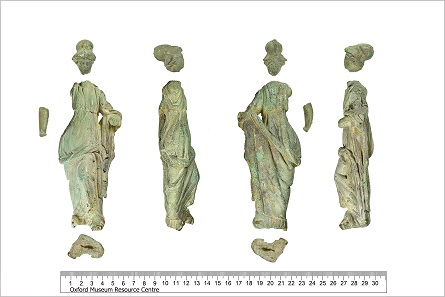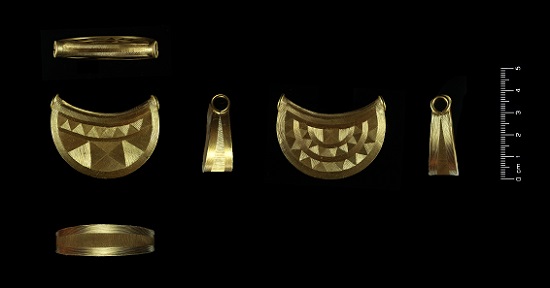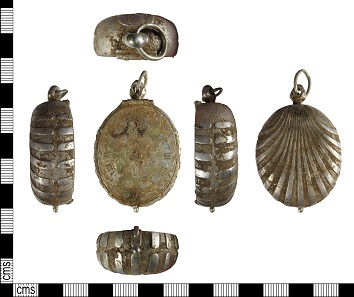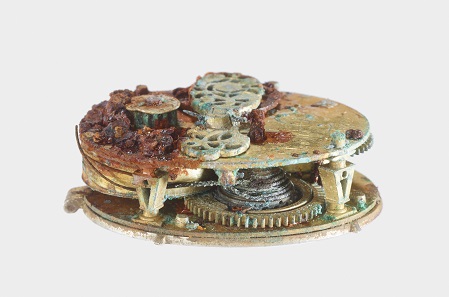January 10, 2019 – The British Museum revealed that the number of Treasure discoveries made by members of the public has hit a record level for the second year running. The provisional number of Treasure finds – generally defined as gold and silver objects over 300 years old, or groups of coins and prehistoric metalwork – in 2017 is 1,267 across England, Wales and Northern Ireland.
Romano-British statuette of Minerva from Hailey, Oxfordshire. Photo: Rod Trevaskus on behalf of Oxfordshire County Council / PAS.
Some 78,000 archaeological items were recorded on a voluntary basis with the Portable Antiquities Scheme (PAS) in 2017 – which includes treasure finds – totaling 79,353 new recorded entries on the PAS database. 93% were found by metal detectorists. Norfolk was the county which produced the most finds, followed by Lincolnshire and Suffolk. There are now over 1.3 million objects recorded by the PAS on its database and freely accessible to the public. The PAS scheme is managed by the British Museum in England and the Amgueddfa Cymru – National Museum Wales.
The Treasure Annual Report 2016 and Portable Antiquities Annual Report 2017 were released at an event at the British Museum and announced by Michael Ellis MP, Minister for Arts, Heritage and Tourism. The reports also highlights that 363 of the finds of Treasure in 2016 have been acquired by museums, so that they can be seen and enjoyed by the public. The vast majority of these (91%) are acquired by local museums and it is hoped that many of the record breaking discoveries in 2017 will also end up in public collections The reports also reveal that the number of Treasure cases from Wales (40) is the largest amount in a single year since the inception of the Treasure Act in 1997.
Late Bronze Age gold bulla from the Shropshire Marches. Photo: The Trustees of the British Museum.
Some of the most significant recent Treasure finds include a Bronze Age gold bulla and also gold lock rings sealed in lead. Found in the Shropshire Marches, these 3,500 year-old items are exquisite examples of workmanship which suggest the area in which they were found was used for rituals. Another find is an incredibly rare survival of a 375-year old silver pocket watch. The complex instrument has the clear inscription of the watchmaker – and very few examples of his work are known to survive.
Another recently ‘discovered’ object is a 2000 year old Roman statue of the goddess Minerva which was kept for a decade in a margarine tub after mistakenly being identified as a modern copy. First found on farmland in the early 2000s by a metal detectorist, its true significance only came to light after being seen in the home of the landowner by another detectorist many years later. It was then taken to the local Finds Liaison Officer at the Oxfordshire Museums Service where it was confirmed to be a very rare find.
All views of the Post-Medieval silver pocket watch from Buckinghamshire. Courtesy of the Portable Antiquities Scheme.
This is the 12th year that the British Museum has managed the Portable Antiquities Scheme. During that time, many important discoveries have captured the public’s imagination including the Staffordshire Hoard and the Frome Hoard. The interest in these finds and what they teach us about the past has meant that the British Museum is currently touring a brand new exhibition on treasure around the country. Hoards: A Hidden History of Ancient Britain is currently at the Salisbury Museum and will travel to the Ulster Museum, National Museums Northern Ireland; Buxton Museum and Art Gallery; Brading Roman Villa, Isle of Wight; and the Ferens Art Gallery, Hull in 2019.
Inside mechanism of Post-Medieval silver pocket watch from Buckinghamshire. Photo: The Trustees of the British Museum.
Hartwig Fischer, Director of the British Museum, said “Another record breaking year of Treasure finds is wonderful news for our knowledge and understanding of Britain’s past. To know that many previous discoveries continue to go to museums so that the public can benefit is hugely encouraging. The British Museum takes its commitment to these schemes very seriously and we’re delighted to have worked with so many passionate organisations and individuals over the past year to ensure that the Portable Antiquities Scheme continues to go from strength-to-strength.”
Michael Ellis, Minister for Arts, Heritage and Tourism said: “Thousands of hidden treasures have been uncovered this year, helping us to learn more about our past and those that came before us. Many of these important finds have been acquired by, and gone on public display in our museums, meaning that more and more people can experience and understand our rich history.”
CoinsWeekly published a detailed article about the Portable Antiquities Scheme.
To find out even more about the Portable Antiquities Scheme, visit the official website.
More information is also available on the The British Museum website.







